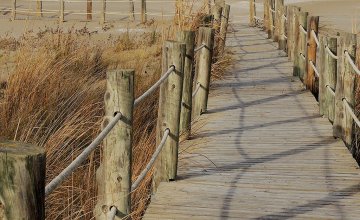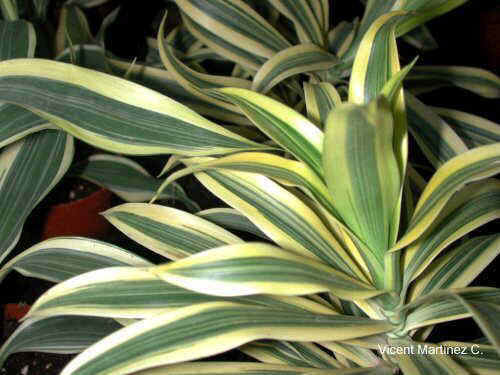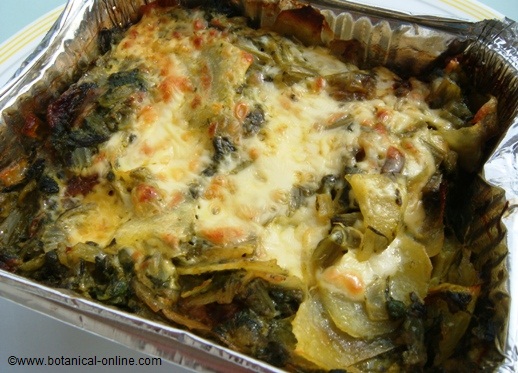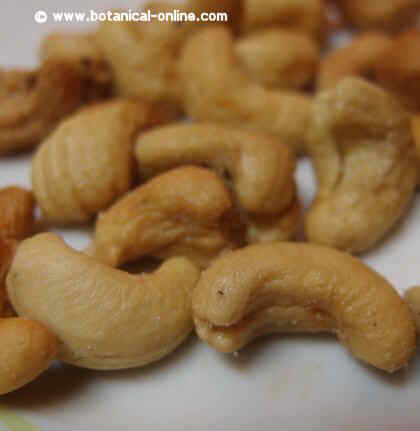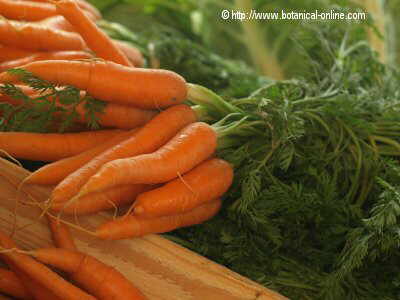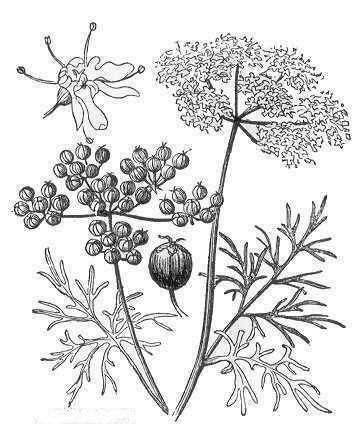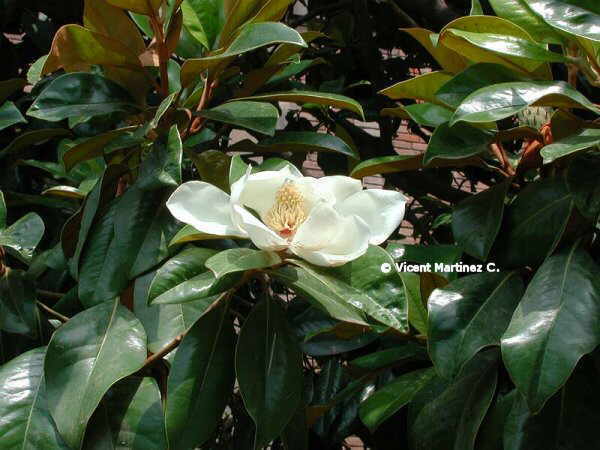Contents
Growing peas
![]()
Characteristics of pea plant
Annual plant of the Papilionaceae family up to 1 m. Ashen green stems covered with a kind of wax, hollow inside. Compound leaves up to 3.5 cm, oval leaflets. Stipules greater than the leaflets. Hardened tendrils. Flowers gathered in inflorescences on long peduncles. The flowers vary in color according to the different varieties (white, blue, purple, pink or blue). Fruits in pods with the seeds inside
 Peas. Irrigation and moisture
Peas. Irrigation and moisture
Water sparingly. A couple of times in winter and four times in spring. Water the soil before planting. Maintain good moisture when the fruit is being produced. Peas require water when in bloom.
In winter crops, soil must be controlled to avoid waterlogging which would produce seed rotting.
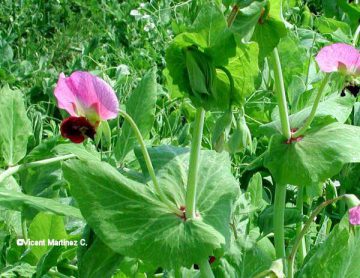
![]()
Peas. Use and varieties
Peas are primarily used because of their fruits. Tender pods and green peas are cooked as vegetables and dried beans as legumes.
The entire plant, including their fruits, is used for fodder production. When planted for forage, it can be planted alone or in combination with other cereals. There are also decorative varieties.
Peas can also be used as a useful plant to fertilize the soil because of its ability to fix nitrogen, so it is convenient to cut only the external parts of the plant and leave the roots in the soil.
The decomposition of the roots will incorporate the nitrogen to the soil helping other plants to grow.
There are many varieties that can be used depending on the weather and the planting season. Among the most interesting European varieties we can point out: Sponsor, Magnus, Solara, Athos, Sketchy, Baccara, or Grace. The currently used varieties are:
- Snow flake
- macrocarpum
- First Felthan
- Kelvedon Wonder
- Little Marvel
- Meteor
![]()
Peas. Temperature and exposure
With a moderate temperature, you’d better expose them to the sun. With a temperature above 27 or 28 º C, it is more convenient to provide your peas shade during peak hours.
The young plants may freeze with a temperature around about 4 º C, but mature plants stand up well even with a temperature of -7 º C. The seedlings of early varieties should be protected with garden cloches when there is a risk of frost.
Peas grow best in high areas with mild temperatures than in warm areas.
![]()
Peas. Time of planting, germination and cultivation
The main types of peas by planting time are the following:
- Early Crops: Planting alternating varieties from February to late April is very useful to get crops from June to August. Among these early varieties we can consider:
- First early: It can be planted in February and can be collected in the first days of June. Early varieties are Feltham First, Little Marvel or Meteor.
- Second early: It can be planted in early March and will need about 14 weeks to begin to be collected. Among the main varieties we have Onward, to withstand very cold weather, or Greenshaft Hurst.
- Main harvest: It’s held since late March to late April. Within this variety we have: Recette or Lord Chacelor . They need 14 or 16 weeks to produce fruits.
- Medium crops: Plantation is carried out from mid-May to late June. Harvesting of these varieties can be accomplished in late September.
- Late crops: They are being planted in early July in order the first fruits to be produced in early October. The varieties used are the same as those used in early crops.
Peas can be classified according to their resistance into two types:
- Peas with round seeds: These are the most resistant, so they are used in early or late crops.
- Peas with wrinkled seeds: They are the less resistant, so they are used for planting in spring.
In general, we can say that the harvest of peas must be made one month after they have fully bloomed. If you prefer to eat their tender pods, it is important to collect the seeds before they grow fat.
Picking peas on time is stimulating for the pea plant, because it helps this plant to make the rest of pods swell.
How to plant peas?
There are different methods to plant peas. The preferred method is by grooves located at a distance that can vary between 45 and 110 cm from each other depending on the height the peas reach.
Dwarf varieties, which correspond to the earliest crops, need the minimum distance. Climbing varieties, which are those that correspond to the main crop harvest, need much more space.
It is generally said that the distance from one groove to another will be the same than the height this plant reaches.
The grooves should be about 5 cm deep and the seeds should be planted at a distance of 12, 5 cm one from the other.
Having planted the seeds in the furrow, this should be capped and the soil lightly pressed. It is convenient after planting, to cover the seeds with a wire mesh so that birds do not take out them.
While peas can be grown without stakes, it is desirable to provide them something to hold with their tendrils. This will produce higher yields and will avoid possible plant putrefaction.
A very common way is to make a fence of reeds for the peas to climb. In the absence of reeds, a kind of wall with a nylon net or a wire attached to sticks can be built. Some stakes can be placed when the plants are about 7 to 10 cm.
![]()
Peas. Types of soil and fertilizer
Peas grow well in neutral or alkaline soil instead of acid soils. They can thrive well in limestone or medium loamy lands, that’s to say, those formed with a mixture of clay and sand with a pH between 6 and 7.
Peas usually do not need nitrogen as they are able to produce it from a bacterium called Rhizobium leguminosarum. These bacteria form nodules in roots capable of fixing atmospheric nitrogen.
Sometimes, in areas deficient in these bacteria, farmers need to introduce them artificially. It may be useful to add 25 kg of nitrogen per hectare if you want the camp to attain a rapid growth.
Although nitrogen may not be necessary, it is good for the soil to contain a balance of phosphorus and potassium. If not appropriate, you should introduce some fertilizer (potash and phosphates). The usual dose is about 50 kg per ha of phosphorus pentoxide (P2O5) and the same amount of potassium oxide (K2O). It is important to prepare the soil before planting.
![]()
Peas. Pests and diseases
The main pests that affect peas are:
- Pea Moth (Laspeyresia nigricana). It is the major pest of pea. This is a butterfly that lays its eggs in the flowers and whose caterpillars eat the pea pods before they swell. It is very difficult to eradicate this disease. It affects both, winter and spring varieties . To solve it we can use a product such as fenitrothion or use varieties that produce flowers outside this period.
- Pea aphid (Acyrthosiphon pisum Harris): They eat the plants. We will need a systemic insecticide.
- Pea trips (Kakothrips robustus Uzel): They are insects that enter their jaws in the green parts pf the pea plants, producing lesions on the pods and on the leaves.
The main diseases that affect peas are:
- Pea pod spot (Ascochyta pisi Lib.): They are fungi that produce spots on all parts of the plant. This disease especially develops with humid and warm temperatures. It requires treatment with copper oxychloride.
- Powdery mildew (Erysiphe poligoni DC) It is responsible for covering the soil with a gray powder
- Pea enation mosaic virus (PEMV): It produces spots on leaves of white and dark tones that give rise to a leaf scleroderma. This virus usually comes from contaminated seed but there are other insects that can transmit it. The best way to avoid this plague is to control the seeds to avoid contamination and to eliminate the insects that transmit it with the appropriate insecticide.
![]() More information about peas.
More information about peas.

 Peas. Irrigation and moisture
Peas. Irrigation and moisture